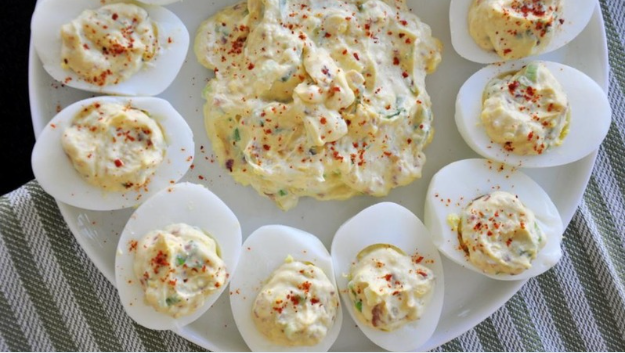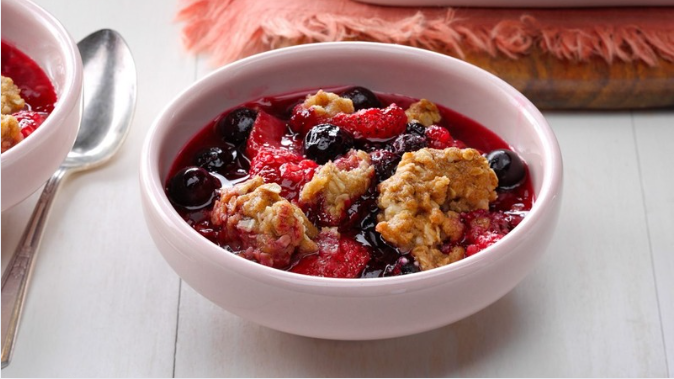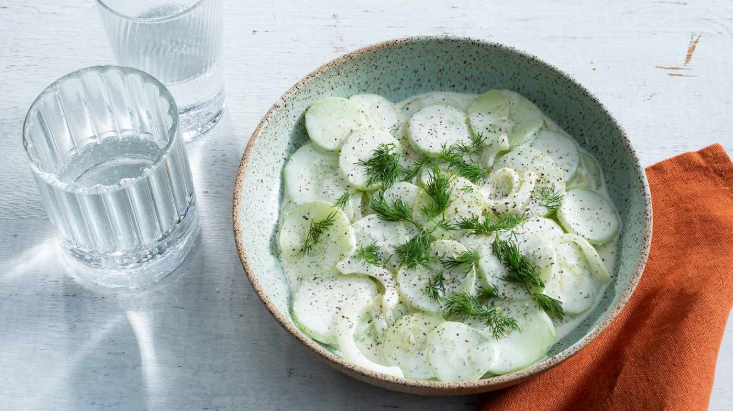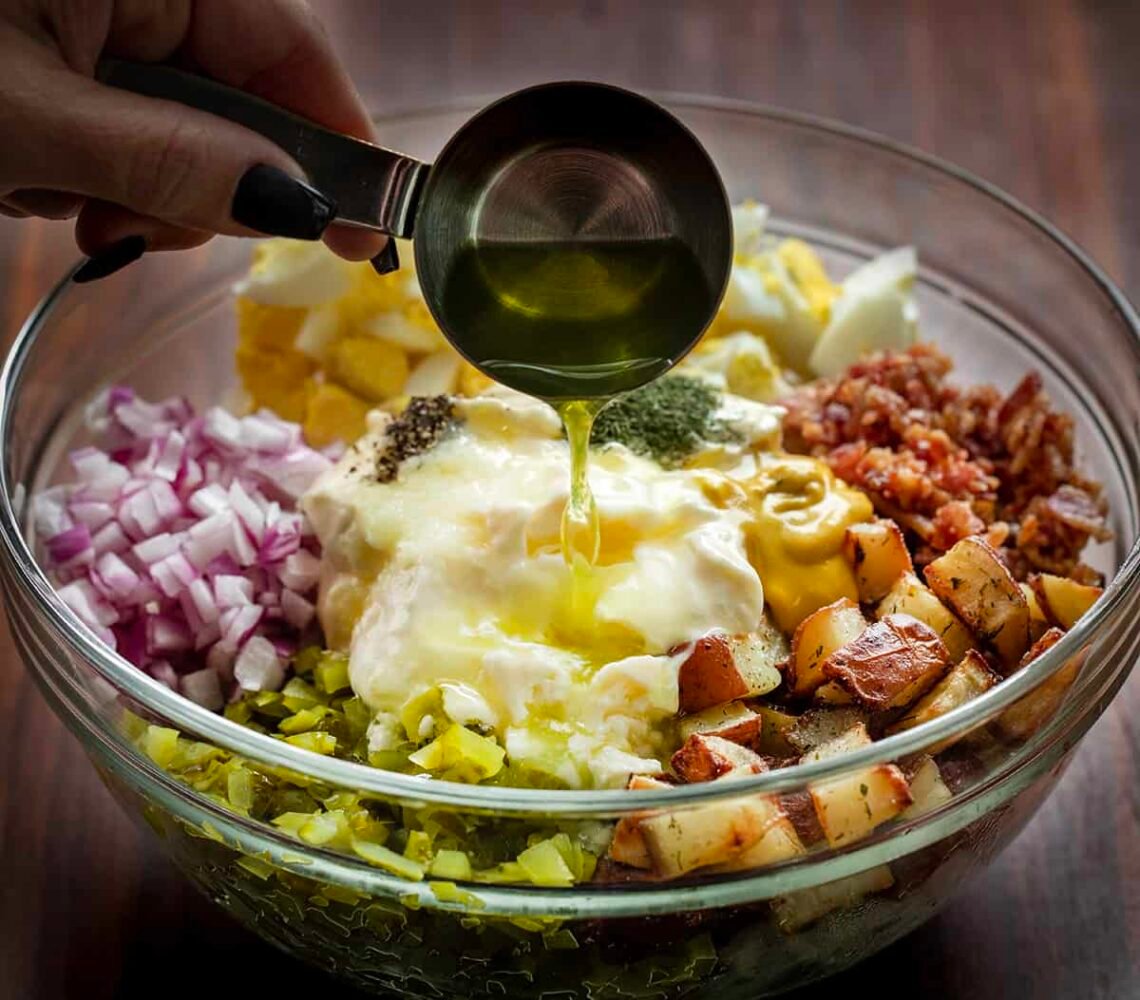Ingredients Equipment Needed Instructions Step 1: Prepare the Tempeh Step 2: Cook the Tempeh Option 1: Bake (Preferred for Even Crispiness) Option 2: Pan-Fry (Quicker, More Hands-On) Option 3: Air-Fry (Fast and Crispy) Step 3: Serve Serving Suggestions Make-Ahead Tips Storage Nutritional Information (Per Serving, 4 Strips)
-
-
Ingredients Equipment Needed Instructions Step 1: Cook the Bacon Step 2: Hard-Boil the Eggs Step 3: Prepare the Filling Step 4: Fill the Eggs Step 5: Garnish and Serve Serving Suggestions Make-Ahead Tips Storage Nutritional Information (Per Serving, 2 Halves)
-
1. Decadent Chocolate Lava Cakes A warm, gooey center makes these individual cakes a showstopper for chocolate-loving dads. Ingredients (Serves 4): Steps: Tip: For an extra touch, add a pinch of espresso powder to enhance the chocolate flavor. 2. Bourbon Pecan Pie A Southern classic with a boozy twist, perfect for dads who enjoy a bold dessert. Ingredients (Serves 8): Steps: Tip: Toast pecans lightly before adding for a deeper nutty flavor. 3. Salted Caramel Cheesecake A creamy cheesecake with a luscious caramel topping for dads who love sweet-salty combos. Ingredients (Serves 10): Steps: Tip: Use a water bath to…
-
Creating Judy’s Strawberry Pretzel Salad requires attention to detail to ensure each layer sets properly and maintains its distinct texture. Here are key tips, drawn from user reviews and expert advice across sources: Variations and Customizations Judy’s Strawberry Pretzel Salad is highly adaptable, with cooks across generations tweaking the recipe to suit preferences or dietary needs. Common variations include: These variations highlight the recipe’s flexibility, allowing cooks to tailor it to personal tastes or seasonal ingredients while preserving its core appeal. Enduring Appeal and Modern Relevance Judy’s Strawberry Pretzel Salad remains a beloved dish due to its nostalgic charm, ease…
-
Introduction The Swedish Princess Cake, or Prinsesstårta, is a beloved Scandinavian dessert that has captured hearts worldwide, often cited as Sweden’s most iconic cake. With its delicate layers of sponge cake, raspberry jam, vanilla custard, whipped cream, and a signature green marzipan dome, this vintage recipe is both elegant and indulgent. Its recent popularity, as noted on platforms like Allrecipes and AOL, stems from its stunning presentation and harmonious flavors, making it perfect for birthdays, holidays, or any special occasion. This 2000-word guide provides a comprehensive recipe, including step-by-step instructions, tips for success, variations, and insights into its cultural significance.…
-
Introduction Dad’s Creamy Cucumber Salad is a timeless dish that brings together the crisp, refreshing taste of cucumbers with a rich, tangy dressing. This recipe, passed down through generations, is a staple at family gatherings, summer barbecues, and potlucks. Its simplicity belies its flavor, combining fresh vegetables with a creamy, herbaceous dressing that’s both comforting and light. This 2000-word guide provides a comprehensive look at how to make this salad, including tips for perfect execution, variations to suit different tastes, and nutritional insights to help you make informed choices. Whether you’re a seasoned cook or a beginner, this recipe is…
-
Introduction London Broil is a classic beef dish that, when prepared correctly, delivers bold flavors and melt-in-your-mouth tenderness. Despite its name, London Broil is not a specific cut of meat but rather a cooking technique that transforms tougher, lean cuts into a juicy, flavorful centerpiece. Often made with top round or flank steak, this dish relies on marinating, precise cooking, and proper slicing to achieve its signature tenderness. In this 2000-word guide, we’ll walk you through a foolproof recipe for Always-Tender London Broil, complete with tips, variations, and insights into making this budget-friendly dish a star at your table. Whether…
-
Introduction Potato salad is a beloved side dish, gracing tables at picnics, barbecues, and family gatherings worldwide. Its creamy texture and versatile flavor profile make it a crowd-pleaser, but sometimes, you want to elevate the classic recipe with a bold, tangy twist. Enter the Dill Pickle Potato Salad—a vibrant, zesty variation that combines the comforting familiarity of potato salad with the sharp, briny kick of dill pickles. This recipe not only delivers on flavor but also offers a refreshing change that will have your guests coming back for seconds. In this comprehensive guide, we’ll walk you through the recipe, tips…
-
Introduction This Watermelon Acai Hydration Smoothie is a refreshing, nutrient-packed drink perfect for hot summer days or post-workout hydration. Combining the juicy, water-rich watermelon with antioxidant-laden acai, this smoothie delivers a balance of flavor, hydration, and health benefits. It’s simple to make, customizable, and ideal for anyone seeking a delicious way to stay hydrated and nourished. The recipe is naturally vegan, gluten-free, and can be adapted for various dietary needs. Ingredients (Serves 2) Equipment Instructions Nutritional Information (Per Serving, Approximate) Tips for Success Variations Storage Why This Smoothie? The Watermelon Acai Hydration Smoothie is designed for those seeking a hydrating,…
-
In a world of neon-lit drive-thrus, vending machine temptations, and grocery aisles brimming with colorful packages, junk food is everywhere. It’s cheap, convenient, and engineered to keep you coming back for more. But beneath the crispy, sugary, salty allure lies a darker truth: junk foods wreak havoc on our bodies, minds, and even our planet. From heart disease to environmental waste, the cost of these quick fixes is steep. This article dives into the junk foods you should avoid, why they’re harmful, and how to make smarter choices without sacrificing flavor. Buckle up—it’s time to rethink what’s on your plate.…










